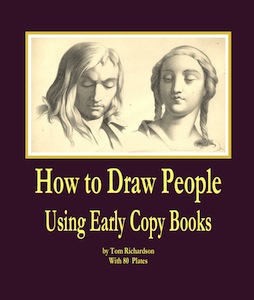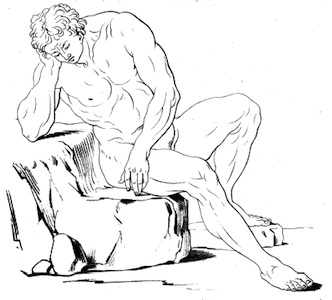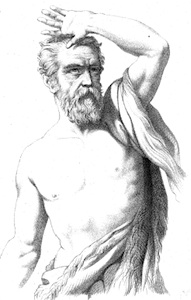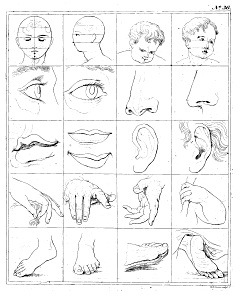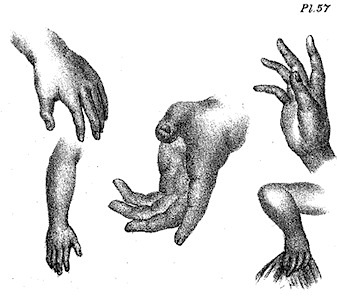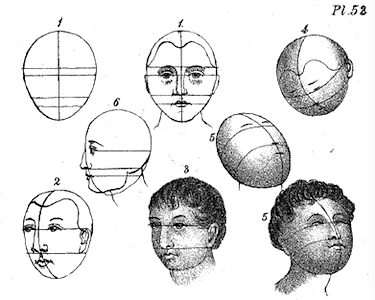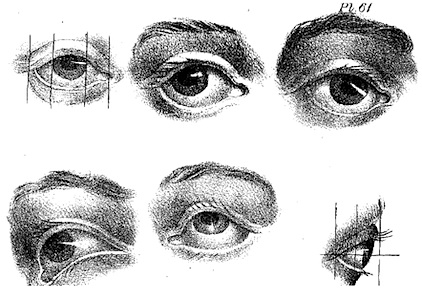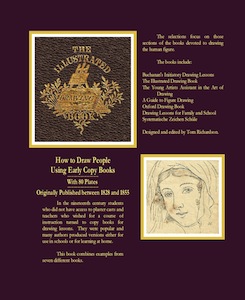|
|

Figure Drawing EbooksHow to Draw People Using Early Copy BooksWith 81 Plates |
Learn How to Draw Perspective
�
|
How to Draw People: Using Early Copy Books
A new book available at Amazon.com
The Illustrated Drawing Book
The Young Artist's Assistant in the Art of Drawing
A Guide to Figure Drawing
Oxford Drawing Book
Drawing Lessons for Family and School
Buchanan's Initiatory Drawing Lessons
Systematische Zeichen Schüle
|
|
From the INTRODUCTION In the eighteenth century there was a great movement to teach drawing through the use of copy books. There was a philosophical opinion that acquiring skill in drawing would transfer both to other intellectual endeavors and to vocational success. In the opinion of these teachers there was no better way to learn to draw than through copying the works of those who had mastered the art. Typically the student was encouraged to study am example of a master's work and then reproduce it freehand. Most books approached the subject through a series of exercises beginning with drawing simple lines, then parallel lines, then simple shapes and learning to shade simple shapes, proceeding to more complex shapes and subsequently the human figure. This book of reproductions of drawings from early copy books skips the initial steps and jumps right to the human figure. John Chapman produced a massive and well known book of this type in 1858 in which he sets forth the basic premise: "Anyone who can learn to write can learn to draw and, as writing is not taught to those only who are destined to become authors, but as forming an essential part of general education, so is drawing equally important to others besides professional artists. To write ‹to draw a form or figure that shall be recognized as the representative of a letter or word, is one tiling; and to be able to design, draw, or write such forms, upon principles of grace and accuracy‹to understand the Art of writing ‹ is another. Thus it is also with Drawing, another mode of expressing ourselves, not less useful or necessary than that by letters or words. To draw a horse, that shall not be mistaken for a man, is one step; but to draw a horse, with all his just proportions and developments, movement and expression, is an Art to be acquired. Any one can make something on paper to look like a tree, a cottage, a road, a brook, or a mountain; but Art goes farther, and, as if to compensate for what it falls short of, invests the whole with a charm more impressive than the reality, even to the most simple-minded cow-boy, who may have gone that road or waded that brook a thousand times, unconscious of the beauty that surrounded him, until it was developed by the hand of Art ." "Who has ever hesitated to teach a child to write, because it was not intended that he should be an author? How many regard the art of Drawing as being of no practical importance, as a branch of education, to any but professional artists; and consider it, in its most favorable light, as a mere accomplishment ‹ a pursuit only for the man of leisure? The resources of our schools are often exhausted in "finishing" our youth with " every accomplishment;" laid on so lightly, that, for all real and practical purposes, they are as ephemeral as the gay tints of the painted butterfly. Smatterings of languages, living and dead, are heaped upon them, while the great, universal language, the language of Design, is forgotten; or only thought of in the production of some huge "castle and ruins, with a man and a boy with a stick; and a dog"‹painted by the teacher, under the scholar's direction, to hang in the parlor, as the veritable, first, and last, and only production, of the latter: who at once assumes, therefrom, an oracular authority in all matters connected with the Fine Arts, and leaves admiring friends in wonder, at what "he might have done, had he not given it up." To such, it may be said, "You have never begun." ?It is not only as a beautiful accomplishment, or a source of amusement for leisure moments, that the art of Drawing should be cultivated. It has its practical uses, in every occupation of life. It opens to all inexhaustible sources of utility, as well as pleasure; practices the eye to observe, and the hand to record, the ever-varying beauty with which nature abounds, and spreads a charm around every object of God's beautiful creation, unfelt and unknown to those who have failed or neglected its cultivation. It does more: it gives strength to the arm of the mechanic, and taste and skill to the producer, not only of the embellishments, but actual necessities of life. From the anvil of the smith and the workbench of the joiner, to the manufacturer of the most costly productions of ornamental art, it is ever at hand with its powerful aid, in strengthening invention and execution, and qualifying the mind and hand to design and produce whatever the wants or the tastes of society may require." This is a review of the first book Buchanan's Initiatory Drawing Lessons from The New Monthly Magazine, Literary Journal March 1, 1928: "Buchanan's Initiatory Drawing Lessons. 4to.. 21s. Glasgow. We have already noticed these initiatory drawing lessons in the form of numbers. The idea is excellent, of teaching drawing, sufficient for all useful purposes, and writing at the same time. Mr. Buchanan hat recently published Lithographical Lessons for black-lead pencil, but these by no meant equal the former ones for the pen. This speedy mode of acquiring drawing la well worthy of introduction into all schools, where writing it taught to the lower. classes on the most economical principles, and might be adopted in charity and national schools with great effect. Indeed, country schoolmasters, particularly, would do well to procure this simple work, and to adopt the plan laid down in it, without delay. The drawings vary in sophistication, but the advice is, in every case, sound and the modern student will find much to learn from these old books." |
Preview the book at Google Books.
